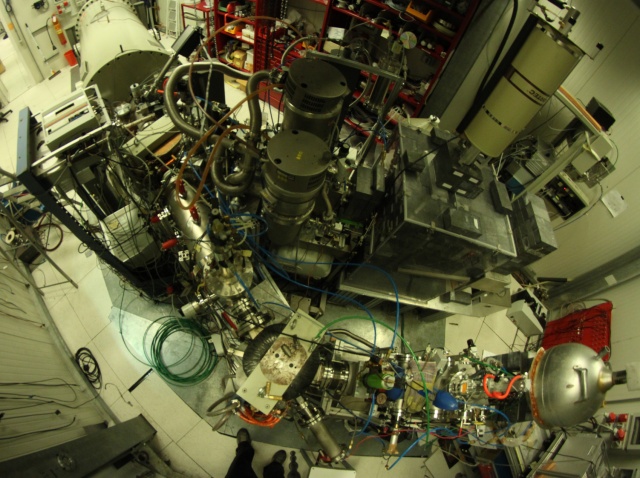A further step towards the understanding of the origin of chemical elements
A much larger than previously estimated ratio of the low abundant isotope oxygen-17, formed in red giants, transforms into other isotopes during a nuclear reaction, which until recently was not widely known. The result may redefine present models about the origin of chemical elements and the inner workings of stars. The experiments have been conducted within the framework of the collaborative international LUNA project, with the participation of MTA Atomki researchers in the Gran Sasso Science Institute in Italy.
Of the oxygen on Earth, 99.76% consists of isotope oxygen-16, while the remaining 0.24% is made up of isotopes oxygen-17 and oxygen-18, containing nine and ten neutrons, respectively, instead of the eight neutrons in the dominant oxygen-16. The occurrence rates of these rare isotopes provide valuable information about their origin, and their analysis may allow a better understanding of the history of the universe and the origin of chemical elements.
Experiments in the protection of 1,500-meter-thick layers of rock
However, isotope rates can only bear useful information if the possible place and mechanisms of their formation are known. Most of these processes occur inside stars, and often at surprisingly low energy levels – therefore, interfering cosmic background radiation would prevent their measurement. This problem has been overcome by the underground experiments conducted at LUNA (Laboratory for Underground Nuclear Astrophysics), where a complete shield against cosmic rays is provided by nearly one-and-a-half-kilometre-thick layers of rock. Due to its underground position, it is the only research facility in the world where cosmic background radiation is so low that processes otherwise impossible to study have become the subject of research.
The LUNA accelerator produces protons or alpha beams, and makes them collide with the nuclei of a carefully selected isotope. A specific detection technique is applied to observe exceptionally rare nuclear reactions.
 The Sun compared to the largest and smallest red giant examined by the Kepler space telescope. (temparatures provided below in kelvin) Source: NASA
The Sun compared to the largest and smallest red giant examined by the Kepler space telescope. (temparatures provided below in kelvin) Source: NASAThe red giant tells us about a cosmic distant past
Nuclear reactions inside stars not only produce new isotopes, but may also further modify the generated ones. Thus, processes creating and degrading isotopes are of equal importance for scientists. The characteristics of such a nuclear reaction degrading isotope oxygen-17 in red giants was determined with great precision by the international LUNA project under laboratory conditions. The related article was published in the latest issue of Physical Review Letters.
According to their findings, at the temperature of red giants, the previously formed oxygen-17 transforms into other isotopes at a significantly greater ratio than previously estimated. The effect of the experimental result on astrophysical models is still under investigation. “This result is an important piece in the puzzle of the origin of the elements in the universe,” said LUNA spokesperson, Paolo Prati.
 The experimental equipment Source: MTA ATOMKI
The experimental equipment Source: MTA ATOMKIHungarian researchers in the LUNA project
LUNA is an international collaboration involving about fifty physicists from Italian, German, Scottish and Hungarian institutes (INFN in Italy; the Helmholtz-Zentrum Dresden-Rossendorf in Germany; the School of Physics and Astronomy of the University of Edinburgh in the UK). The physicists of the MTA Institute for Nuclear Research in Debrecen, Hungary have been making contributions to the collaborative experiments since 2000.
